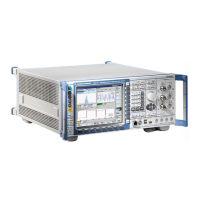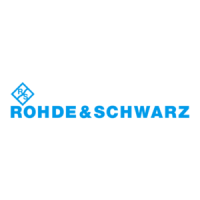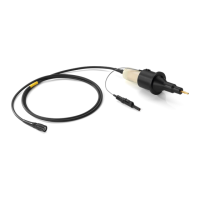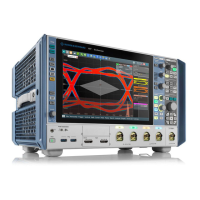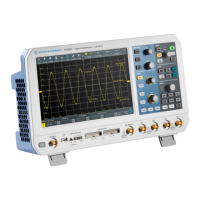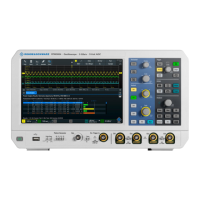CMU Status Reporting System
1100.4903.12 5.17 E-8
CONDition part The CONDition part is permanently overwritten by the hardware or the sum bit
of the next lower register. Its contents always reflect the current instrument
status. This register part can only be read, but not overwritten or cleared.
Reading the CONDition register is nondestructive.
PTRansition part The P
ositive-TRansition part acts as a transition filter. When a bit of the
CONDition part is changed from 0 to 1, the associated PTR bit decides
whether the EVENt bit is set to 1.
PTR bit =1: the EVENt bit is set.
PTR bit =0: the EVENt bit is not set.
This status register part can be overwritten and read at will. Reading the
PTRansition register is nondestructive.
NTRansition part The N
egative-TRansition part also acts as a transition filter. When a bit of the
CONDition part is changed from 1 to 0, the associated NTR bit decides
whether the EVENt bit is set to 1.
NTR bit =1: the EVENt bit is set.
NTR bit =0: the EVENt bit is not set.
This part can be overwritten and read at will. Reading the PTRansition regis-
ter is nondestructive.
With these two transition register parts the user can define which state transi-
tion of the condition part (none, 0 to 1, 1 to 0 or both) is stored in the EVENt
part.
EVENt part The EVENt part indicates whether an event has occurred since the last read-
ing, it is the "memory" of the condition part. It only indicates events passed on
by the transition filters. It is permanently updated by the instrument. This part
can only be read by the user. Reading the register clears it. This part is often
equated with the entire register.
The CMU implementation of the EVENt parts of all status registers differs
from the SCPI specification: The bits in the EVENt part are directly set by the
instrument as soon as the instrument state changes so that the setting condi-
tion becomes true. The CONDition, PTRansition, and NTRansition register
parts are not needed. The EVENt part is cleared upon reading.
ENABle part The ENABle part determines whether the associated EVENt bit contributes to
the sum bit (cf. below). Each bit of the EVENt part is ANDed with the associ-
ated ENABle bit (symbol '&'). The results of all logical operations of this part
are passed on to the sum bit via an OR function (symbol '+').
ENAB bit =0: the associated EVENt bit does not contribute to the sum bit
ENAB bit =1: if the associated EVENT bit is "1", the sum bit is set to "1" as
well.
This part can be written into and read by the user at will. Its contents is not
affected by reading.
Sum bit As indicated above, the sum bit is obtained from the EVENt and ENABle part
for each register. The result is then entered into a bit of the CONDition part of
the higher-order register.
The instrument automatically generates the sum bit for each register. Thus an
event, e.g. a PLL that has not locked, can lead to a service request through-
out all levels of the hierarchy.
Note: The service request enable register SRE defined in IEEE 488.2 can be taken
as ENABle part of the STB if the STB is structured according to SCPI. By
analogy, the ESE can be taken as the ENABle part of the ESR.
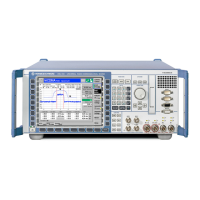
